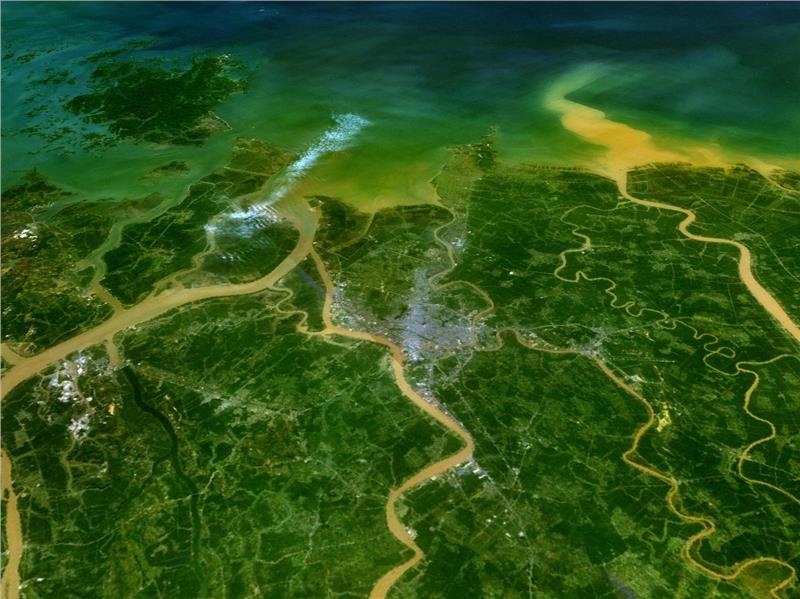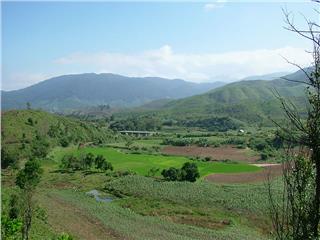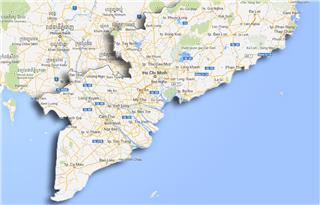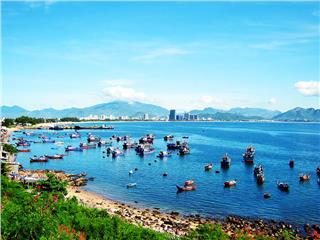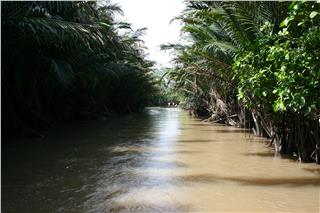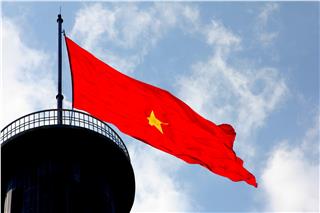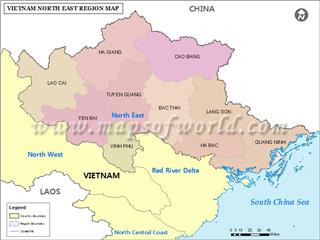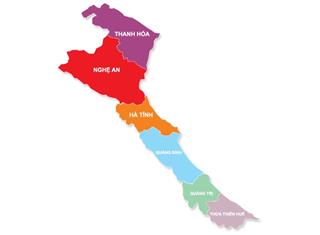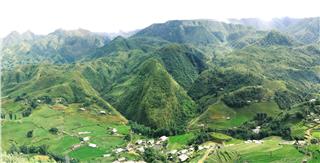Red River Delta is a large land limited by lower stream of Red River in Northern Vietnam. This region consists of 11 provinces with many wonderful landscapes and seascapes. Economy in this region is developed compared with other regions in Vietnam.
Red River Delta has a tremendous potential and many advantages superior to other economic areas. It has favorable position for the economic – social development. Hanoi, the capital of Vietnam as well as the political, economic, cultural center is situated in Red River Delta, which makes the region an important strategic area in politics, economy, society, defense, security and foreign affairs of the country. Red River Delta serves as the gateway in the north of Vietnam with modern transportation systems such as networks of road, river, sea, air, and rail. Important ports are also situated in this region, for example, Hai Phong Harbor and Noi Bai International Airport. They are connecting links between the Red River Delta and other economic regions in the country, and expanding exchanges with countries in the region and in the world.
Area: 23,336 km2
Population: over 19 million people
Geography
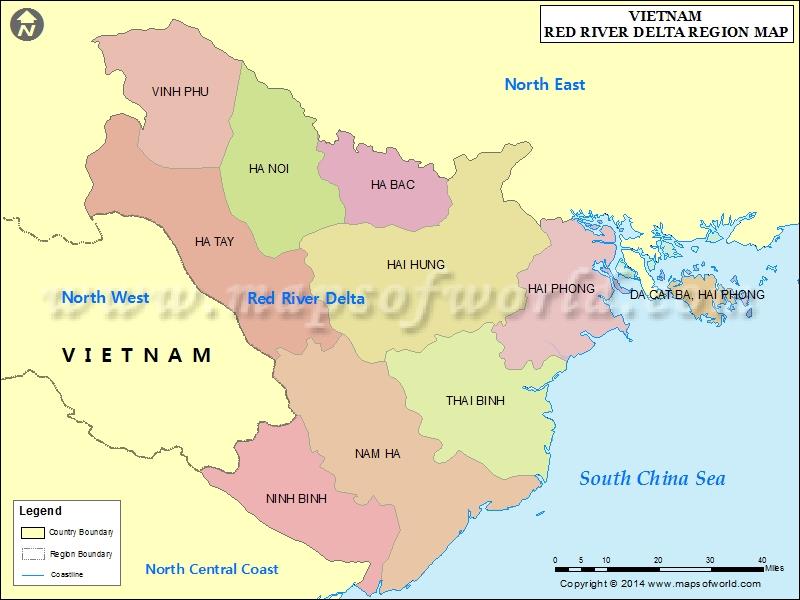
Red River Delta is a vast region located around Red River basin in Northern Vietnam. Red River Delta provinces include Vinh Phuc, Hanoi, Bac Ninh, Ha Nam, Hung Yen, Hai Duong, Hai Phong, Thai Binh, Nam Dinh, Ninh Binh, Quang Ninh. Unlike Mekong River Delta, there are only two provinces in Red River Delta, Thai Binh and Hung Yen having no mountains, so this area is called Red River Delta. The whole area is 23,336 km2, representing 7.1% of the country area. Geography in Red River Delta is characterized by flat topography with dense rivers and streams, which creates favorable conditions to develop transportation and infrastructure systems in this region. The typical climate of this region is dry season (from October to April) also known as winter. In spring, it is drizzling and light rainy. This part of Vietnam owns a large amount of natural resources that contribute greatly to the development of Vietnam industry. To the east of this region is the South China Sea, so Red River Delta has a long coastline with beautiful beaches and favorable places to develop fishery industry.
History
The history of Red River Delta – Red River Civilization is associated with the formations of several cultures. Along Red River, archaeologists unearthed many artifacts related to Hoa Binh Culture, Dong Son Culture and Go Mun Culture. The history of this region also connects with the development of Vietnamese states over the time. About 5000 years ago, Van Lang Kingdom was changed into Au Lac Kingdom with the Phong Chau (Phu Tho) as the capital. After that, the region witnessed a series of invasions, and annexations of Chinese domination and French colonialism. During these periods, many battles and revokes were launched to regain autonomy such as the Battle of Bach Dang, and Battle of Chi Lang. The name of Red River Delta has several features. The northern delta is the main “product” of Red River and Thai Binh River’s alluvium.
People
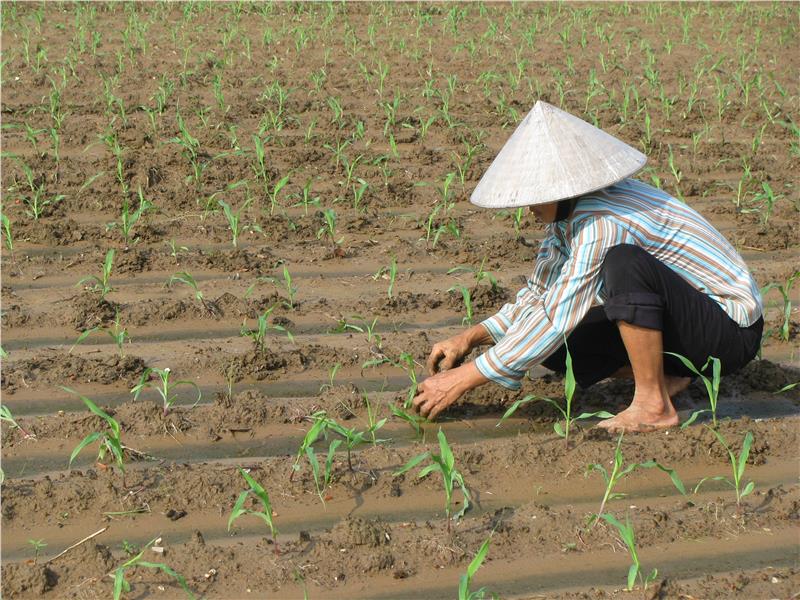
Population in Red River Delta accounts for 22.7% of Vietnam population. Most of them are Kinh people. A small number of population is Muong ethnic minority group living in Ba Vi (Hanoi) and Nho Quan (Ninh Binh). Red River Delta has a dense population, which provides an abundant labor force with high skill and experiences on producing. The native population of this region is not Vietnamese; they are Mon-Khmer and Tay-Thai people. During the period of migration and production, the two groups combined to form ancient Vietnamese people. Here is the most ancient colony in Vietnam. People living in this region have good experiences on producing handicrafts such as silk, pottery, and wooden furniture; some typical traditional handicraft villages are Van Phuc Silk Village, Bat Trang Pottery Village, and Dong Ky Wooden Handicraft, etc.
Culture
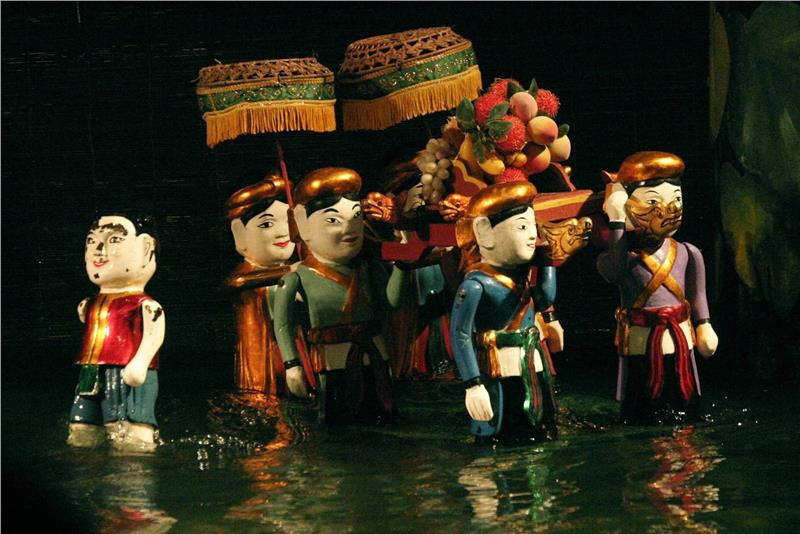
Spiritual life of people in Red River Delta is various, which is demonstrated by the development beliefs and religions, especially Buddhism. In the center of the Red River Delta culture, there are many famous temples and pagodas such as Tram Pagoda, Da Si Pagoda, Dai Bi Pagoda, Thay Pagoda, One-hundred-part Pagoda, Tay Phuong Pagoda, Pho Minh Pagoda, and Keo Pagoda. Temples and pagodas in this region are built in the harmony with the natural environment and aesthetic traditions of Vietnamese people. In the center of Red River Delta, local people are elegant to spiritual culture, costumes, and cuisine. Their clothes are simple in style, color, but high aesthetic level. In cuisine, the people here are gourmets in selecting ingredients and cooking methods. In the region, there are many local specialties partly influenced by Chinese cuisine and European one. Typical cultural activities in this region are water puppet shows, folk traditional games, and Cheo singing, etc.
Language
Almost people in this region speak Vietnamese as their mother tongue, a number of Muong ethnic group speak Vietnamese as their second language. Language in this region is used majorly in national public telecommunication, and means of mass media. Language in this region is characterized by northern dialect. Vocabulary and dialect in this region consist of both Vietnamese words and borrowing words from Chinese.
Economy
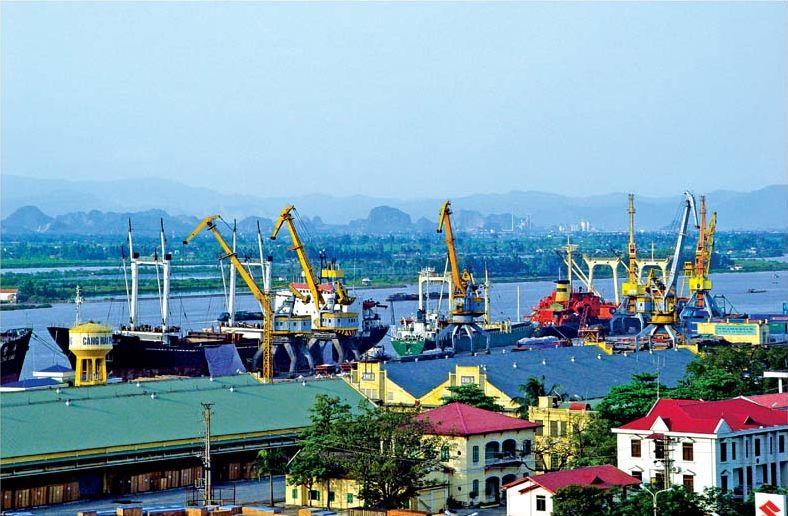
First, in Red River Delta Vietnam, the regional biodiversity is characterized by topography of delta, midland and mountains. Such rich ecological zones are basic conditions for the comprehensive development of agricultural-forestry-fishery production. Thus, Red River Delta is dubbed the second “granary” of Vietnam after Mekong River Delta. It makes an important contribution to ensuring food security and agricultural exports. In this area, there are many mineral resources with large reserves such as 98% of coal, 40% of kaolin, and 25% of limestone in the total reserves of the country. In the period of open-door economy, the economic development in Red River Delta is increasingly improved. Haiphong is a potential province with a dynamic development. Here, the industry of aquaculture is developed significantly, especially offshore fishing. In recent years, the economic structure is shifting from decrease in agriculture, increase in husbandry, fisheries, industrial plants and food plants.
Politics
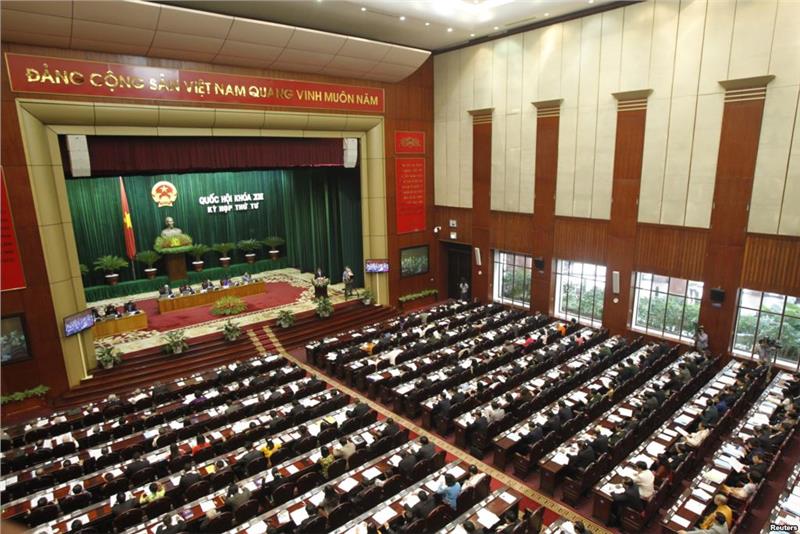
Provinces in Red River Delta include Vinh Phuc, Hanoi, Bac Ninh, Ha Nam, Hung Yen, Hai Duong, Haiphong, Thai Binh, Nam Dinh, Ninh Binh, and a part of Quang Ninh. Among those, Hanoi is the cultural, political and social center of Vietnam. Red River Delta is located in a strategic position in national security an defense. Currently, the Red River Delta is protected by Command of Hanoi and the 3rd Military Region, and the 1st Military Region. The 1st Corps, also known as the Corps with Determination to win, was founded in October 24, is stationed in Tam Diep District, Ninh Binh. It is 1 in 4 main armies in Vietnam.
Society
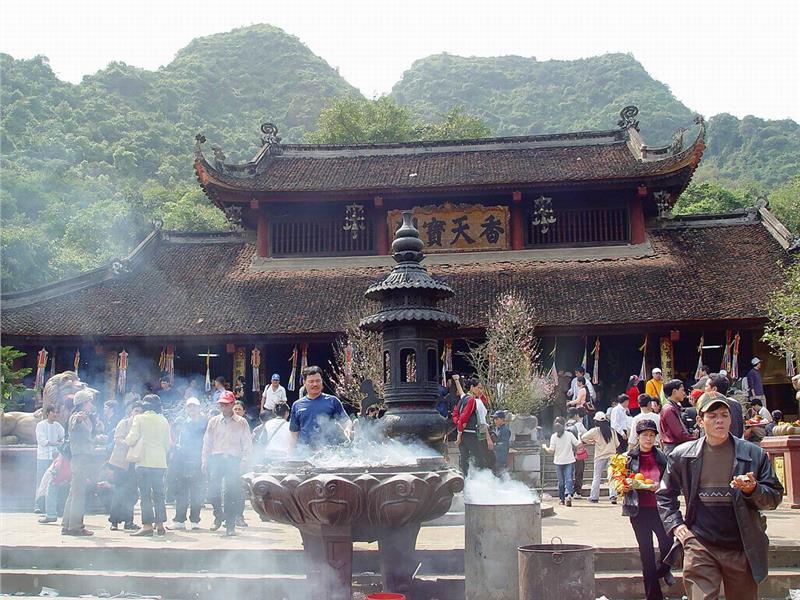
Family life in Red River Delta is influenced by moral norms of Confucianism. Thus, people in this region live harmonically to each other. They highly appreciate the family relationship and respect to the old. In a family in this region, men are seen as bread-builders who are responsible for important decisions and issue regulations. In term of employment, Red River Delta has a great source of high-qualified labor. There is about 26% of the staff having college and universities degrees, 72% of the staff having postgraduate qualifications, and 23.6% technical workforce of the country. There are many colleges, universities, professional schools, private schools, technical vocational schools, and hundreds of specialized research institutes in this region. Red River Delta serves as the gateway to the north of the country. This region is the convergence of modern transportation systems such as networks of roads, rivers, air, and rail. Many important ports are situated in this region, for example Hai Phong Harbor, Noi Bai International Airport. All of them are links between the Red River Delta and other economic regions in the country, and other countries in the region and in the world.
Tourism
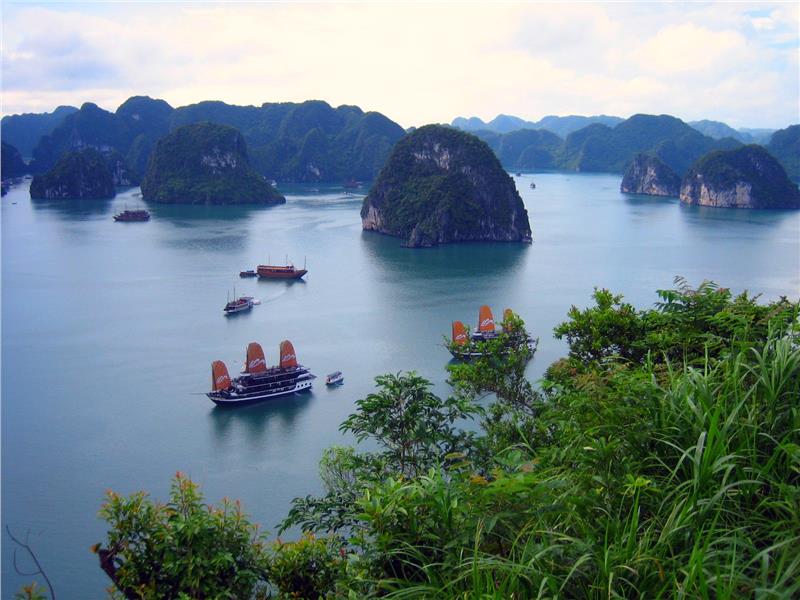
Red River Delta has the greatest potential to develop tourism in Northern Vietnam. To the east of the region is the Gulf of Tonkin with a total of 620 km of coastline. This region possesses a various marine resources with many beautiful and beaches, landscape, and seascapes. In particular, one of the most famous attractions in Vietnam in general and in North Vietnam in particular is Halong Bay which is recognized as one of Natural World Heritages. Besides, Hanoi – Thang Long ancient capital of many feudal dynasties, is the place of glorious historical and cultural relics. In the center of Hanoi, there are many monuments of the cultural and politic center such as Ngoc Son Temple, The Huc Bridge, Tran Quoc Pagoda, Quan Thanh Temple, Quan Su Temple, Voi Phuc Temple, etc. In addition, there are a large number of well-known beauty spots and historical relics in other provinces such as Huong Tich Cave, Ao Vua (King Pond), Trang An-Ninh Binh, etc. and more than 1,700 historical – cultural attractions, accounting for 70% of the country's monuments in this region. That is the basis for the diverse development of tourism.
Festivals
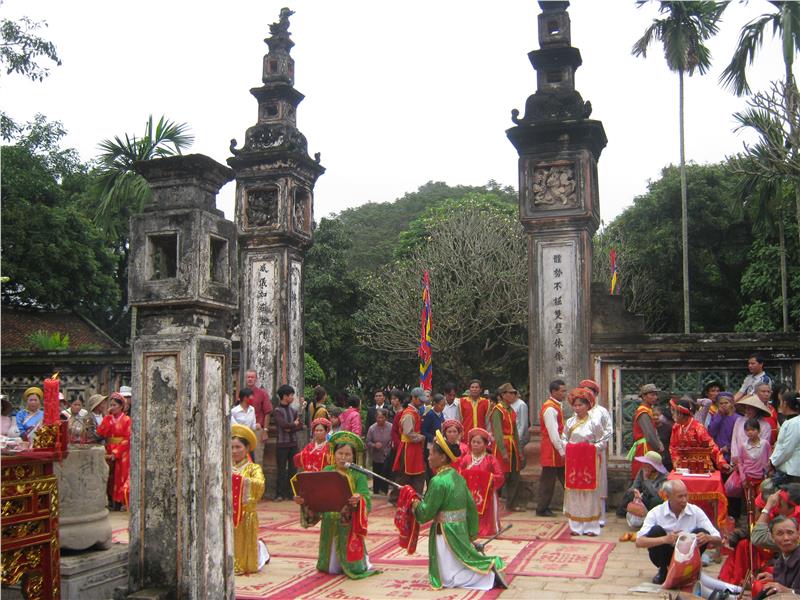
Notably, the sub-region is the home of carnivals and hundreds of different festivals. These festivals vary from historical festivals commemorating celebrities such as Tran Temple Festival, Co Loa Temple Festival, Hai Ba Trung Festival, Dinh King Temple Festival, etc. to spiritual festival as Phu Giay Festival, Thay Pagoda Festival, etc. With the formation and development of traditional craft villages, festivals in this region are increasingly varied. During these festivals, many cultural activities take place such as water puppet performances, Cheo singing, and so on. Vietnamese festivals in Red River Delta are often held in spring, after Tet holiday with many interesting activities and rituals.
